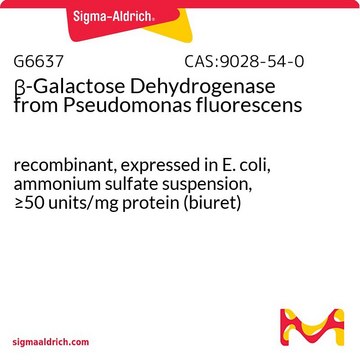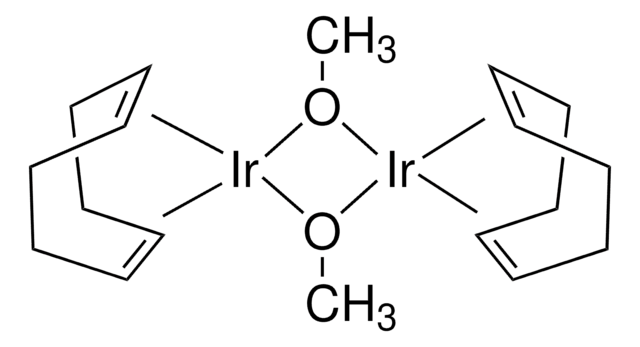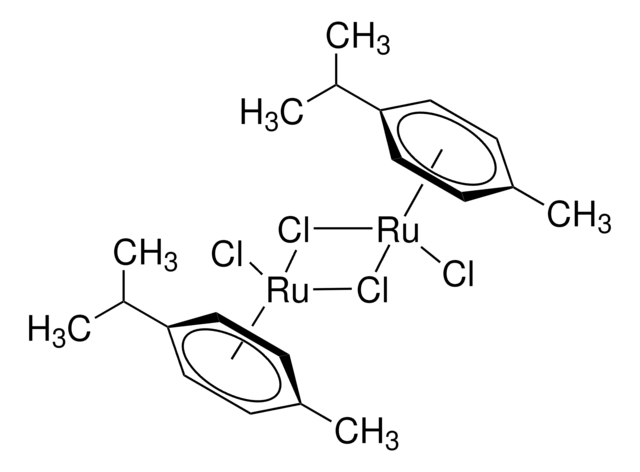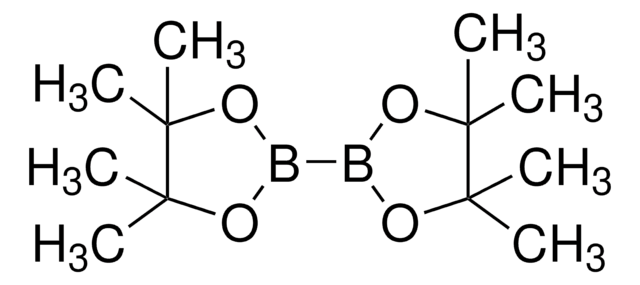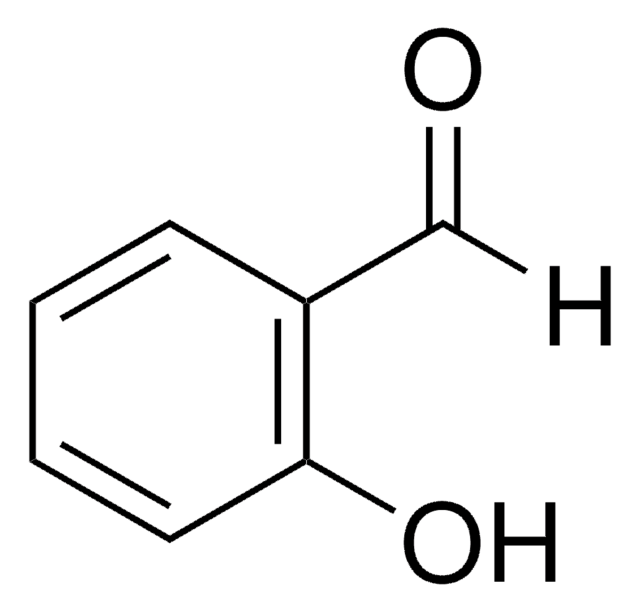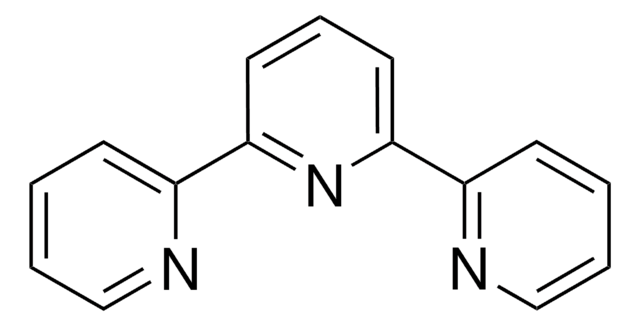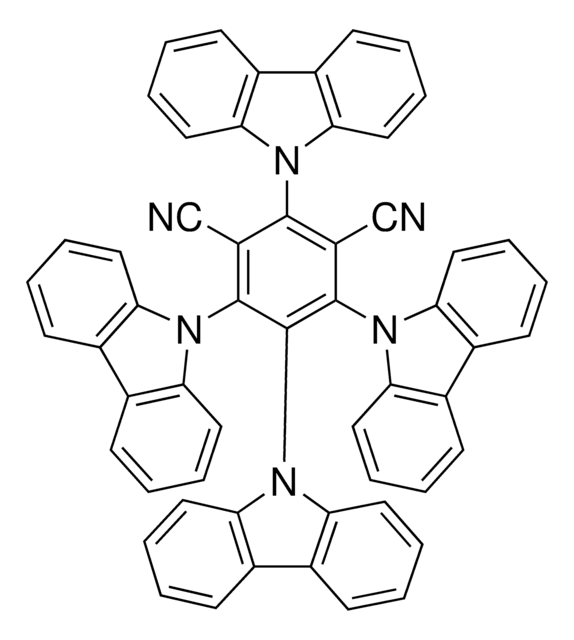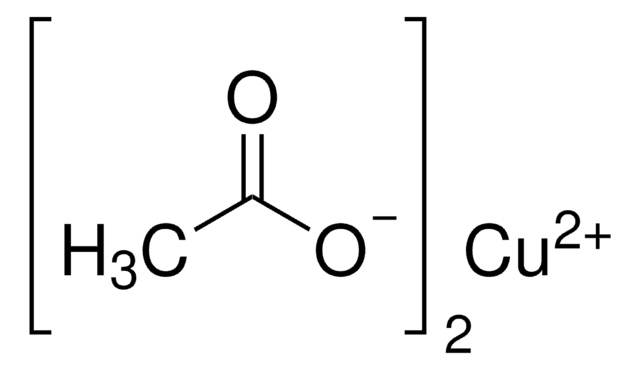BGALD-RO
Roche
β-Galactose Dehydrogenase
from Pseudomonas fluorescens
Synonym(s):
D-galactose dehydrogenase, D-galactose:NAD+ 1-oxidoreductase
About This Item
Recommended Products
biological source
Pseudomonas fluorescens
Quality Level
recombinant
expressed in E. coli
form
suspension
specific activity
~5 units/mg protein (At 25 °C with D-galactose as the substrate; standardized with BSA.)
mol wt
64,000 Da
packaging
pkg of 1 mL (10104973001 [1 mg])
pkg of 1 mL (10104981001 [5 mg])
manufacturer/tradename
Roche
technique(s)
activity assay: suitable
color
white
optimum pH
8.4 (0.1 M in Tris buffer)
pH range
4.6-9.2
solubility
water: soluble
suitability
suitable for enzyme test
UniProt accession no.
foreign activity
ADH <0.01%
LDH <0.5%
NADH oxidase <0.1%
galactosidase <0.01%
storage temp.
2-8°C
Related Categories
General description
Specificity
Galactose dehydrogenase does not oxidize L-galactose, D-arabinose, D-glucose, L-fucose, D-ribose, D-xylose, D-glucuronic acid, D-galacturonic acid or D-galactose-6-phosphate. The enzyme will use either NAD (Km = 0.24 mM; relative rate = 1.0) or NADP (Km = 2.3 mM; relative rate = 0.32).
Application
Quality
Sequence
Unit Definition
The QC assay produces 1 mol of NADH per mol of galactose oxidized.
Physical form
Other Notes
Storage Class Code
12 - Non Combustible Liquids
WGK
WGK 1
Flash Point(F)
No data available
Flash Point(C)
No data available
Regulatory Information
Choose from one of the most recent versions:
Already Own This Product?
Find documentation for the products that you have recently purchased in the Document Library.
Our team of scientists has experience in all areas of research including Life Science, Material Science, Chemical Synthesis, Chromatography, Analytical and many others.
Contact Technical Service